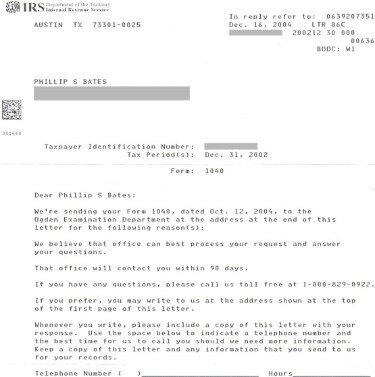Just in Time Inventory System
Contents:


The success of the JIT production process relies on steady production, high-quality workmanship, no machine breakdowns, and reliable suppliers. JIT inventory management requires the cooperation and commitment of everyone in the ecosystem and supply chain. The whole infrastructure might be at jeopardy if any portion of the system fails.

With just-in-time inventory, you can guarantee that you have enough inventory to manufacture just what you need, when you need it. Aiming for high volume manufacturing while keeping inventory to a bare minimum and eliminating waste is the objective. Here is a closer look at these two types of inventory management. Workers move inefficiently and unnecessarily during the production process. The manufacturer has too much inventory on hand, requiring extra storage and management.
Does Pull Ever Come to Tug?
These techniques were more or less suitable for managing retail operations, though even in those settings there were problems like the McDonald’s franchise on the day of a game. If you ran a garage, for example, it would be tough to restock snow tires quickly after a big blizzard because every tire store would hit its order point and there would be a flood of reorders. The OP, OQ system would not react and place an early order when a blizzard was forecast. All original content is copyrighted by SelectHub and any copying or reproduction is strictly prohibited. It is not user-friendly, and an experienced person is required to tackle any issues or challenges faced in the software.

You must also be flexible and ready to respond to sudden shifts in market demands. Do you have stock sitting in your inventory slowly depreciating or find yourself lacking the materials to keep up with customer needs? Maybe it’s time you looked into a just in time inventory management system. While JIT is a good choice for many businesses, it’s not right for all of them. Warehousing is expensive, and excess inventory can double your holding costs. In a just-in-time system, the warehouse holding costs are kept to a minimum.
just-in-time manufacturing (JIT manufacturing)
It’s a canned software package, meaning the features you don’t need can’t be disabled, which can complicate usability. The problem trickled through to other suppliers for Toyota, as well. Some suppliers were forced to shut down because the auto manufacturer didn’t need their parts to complete any cars on the assembly line. The birth of the Just-in-Time philosophy may have come out from a necessity to survive. However, the concept had proved to be so effective that the Japanese identified it as an essential foundation to implement a truly lean process.
In this article, we’ll break down the strategy, discuss its core benefits and features, look at successful implementations, and share our top solutions. Just in Time adoption result in the elimination of overproduction and only manufacture goods as demanded, therefore resulting in a higher return on investment. The JIT system aided Toyota in becoming one of the most dominant car manufacturers in the world by achieving lean manufacturing.
Smarter Ways To Manufacture Chips – SemiEngineering
Smarter Ways To Manufacture Chips.
Posted: Thu, 20 Apr 2023 07:02:22 GMT [source]
Just-in-time inventory ensures that there is just the right amount of inventory to produce only what you need, when you need it. The goal is to achieve high production volumes with minimal inventory on hand, thus increasing efficiencies and eliminating wastage. Many businesses have adopted just-in-time inventory to save costs and stay competitive.
Best JIT Inventory Management Systems
Finally, just in time, inventory management can help improve a business’s overall efficiency. When companies can reduce their time on inventory management, they can free up resources to be used in other business areas. This can lead to a more efficient and more effective business overall. This is because JIT can help to reduce WIP levels and can also help to improve the flow of materials through the production process. In addition, JIT can help to improve quality, as it can help to reduce the incidence of errors and rework.
‘Just in time’ F-35 supply chain too risky for next war, general says – Defense News
‘Just in time’ F-35 supply chain too risky for next war, general says.
Posted: Mon, 03 Apr 2023 07:00:00 GMT [source]
As aforementioned, a perfectly running just-in-time company will often out-compete a business running a just-in-case inventory management system. In order for a just-in-time management system to work, your demand forecasting must be extremely accurate. In addition, you must have a very high degree of coordination with your suppliers so that you can be certain that your just-in-time orders will arrive from your supplier exactly when necessary.
Also, this method reduces costs by minimizing warehouse needs. Companies also spend less money on raw materials because they buy just enough resources to make the ordered products and no more. Just-in-time inventory reduces the clutter that is an inevitable result of keeping too much stock on hand. With reduced clutter, you’ll have space to operate more efficiently.
Unleash the power of visual management!
Instead, those resources are used in other areas that can give your business a competitive edge in a dog-eat-dog environment. When you stock up and buy inventory in bulk, you may get better prices, but you’re likely to buy more than you need for your present purposes. Your working capital will then be tied up in materials that just sit on the shelf for the foreseeable future and you may not have the cash you need for day-to-day expenses such as rent and payroll. Consider another situation where individual cells within the manufacturing chain can be run with kanban control, although MRP II runs much of the rest of the process. This can occur where final assembly schedules are unstable with respect to volume and mix, yet certain portions of the production process see fairly steady demand.
- Also, this method reduces costs by minimizing warehouse needs.
- Waste and inefficienciesare identified and reduced as much as possible.
- When she’s away from her laptop, she can be found working out, trying new restaurants, and spending time with her family.
- As long as you are proactive with management, disasters will never catch you off-guard.
- JIT inventory systems are one tool that can be used to achieve this goal.
- For JIT, presumably, human pull is good, computer push is bad.
Wherever possible, JIT advocates very small production lot sizes, preferably of just one unit. This means that inventory moves through the production process in very small, discrete batches. As each lot is completed, it is immediately passed along to the next downstream workstation, where the production staff inspects it, and can reject it at once if quality standards are not met. This immediate feedback loop greatly limits the amount of scrap generated within the production system. Using just-in-time inventory is positively correlated with business success. Despite this, many business owners think it isn’t for them — the pitfalls and consequences seem like too much of a burden.
Just-in-time inventory management also reduces waste because the farther out you predict demand and purchase inventory, the greater the likelihood you’ll buy items that won’t be used. Customer tastes shift, products are discontinued and stock can deteriorate in storage, especially if it is perishable. Buying just what you need for present purposes helps you to sync more accurately with demand. Inventory management is a process that is used in inventory plans and tracking inventory levels, orders, and sales. It is a critical part of any business that must maintain accurate inventory records.
JIT inventory has the potential to generate tremendous benefits for many companies. This approach has caught on since Toyota invented it because it can lower costs and increase profitability in a big way. The just-in-time inventory system minimizes inventory and increases efficiency. JIT production systems cut inventory costs because manufacturers receive materials and parts as needed for production and do not have to pay storage costs. Manufacturers are also not left with unwanted inventory if an order is canceled or not fulfilled. In order to adapt a successful and error-free JIT manufacturing process, it is important to consider a few elements, starting from inventory and timing.
Non-JIT-adherent employees of your team might have a negative impact on your productivity, quality, and other factors. A variety of factors contribute to the cost of JIT’s local sourcing. It’s possible that a company’s desire for dependability is affecting its bottom line. Social CRM, or social customer relationship management, is customer relationship management and engagement fostered by … Total Quality Management is a management framework based on the belief that an organization can build long-term success by … Reducing the risk of inventory becoming damaged, obsolete or stolen while in storage.
Many benefits can be derived from just in time inventory management. These benefits can lead to a more prosperous and more profitable business. Overall, JIT inventory systems can be a valuable tool for businesses looking to reduce waste and improve efficiency. While there are some challenges to consider, the potential benefits of JIT make it worth investigating for firms in a wide range of industries.
Chapter 8: The Just-in-Time (JIT) Method
Also, a good-size MRP system can tie up the central computer for hours. The same computer might be used for everything from word processing to payroll and general ledger accounting. Yet some shops would be better off working in just such short cycles. A single lead-time number must suffice in MRP for all situations faced on the floor. Consequently, the number has to be set high enough to cover all variations up to the worst case. If an order is ever late, people have an incentive to increase the planned lead time in the system so that the delay does not occur again.
The cards become a planning parameter driven by forecasts of activity. Pull methods like OP, OQ typically do have some push component, such as seasonal expectations. Forecasts of demand patterns can be used to set new values for the order quantity and for the order point. In this manner, the otherwise passive pull system is able to anticipate predictable changes. Many component manufacturing shops supplying subassembly and assembly operations, where the mix may change substantially but the total volume does not vary much, can use this approach.
Inventory Management
Ordering inventory on an as-needed basis means that the company does not hold any safety stock, and it operates with continuously low inventory levels. This strategy helps companies lower their inventory carrying costs, increase efficiency, and decrease waste. JIT requires manufacturers to be very accurate in forecasts for the demand for their products. You run the risk that you won’t have enough product to meet demand. Stockouts can have a drastic impact on customer satisfaction, so businesses using the JIT strategy will need to streamline their production processes and supply chain management.

Other users are builders of common components or subassemblies like motors, similar components like PCBs, and metal-forming operations like blanking, shearing, and pressing. Even if MRP’s timing isn’t perfect, it does all the bookkeeping on quantities, inventory availability, and requirements, net of inventories. For example, an assembly group might want to change its build schedule because parts aren’t available for some current schedule. Yet change is stymied because the appropriate paperwork is unavailable and won’t be available until the next run of the MRP system—say, next week. It often makes no practical sense to run an MRP plan every day. It takes time to collect and distribute all the data involved.
Most importantly, though, double entry accounting management makes your life easier in general. It can help you organize your warehouse, track inventory movement across multiple locations, and even integrate with your other business solutions (like your point-of-sale or accounting software). In a JIT model, only essential stocks are obtained and therefore less working capital is needed for finance procurement.
Highly accurate demand forecasting is also slightly less important. The just-in-time inventory strategy is one of the most famous modern inventory management techniques. It’s a production management philosophy developed and popularized by Toyota focused on eliminating waste, inconsistencies and unnecessary requirements. While developed as a production method, it has broad applications for manufacturing plants, warehouses and any company involved in inventory management. Pull methods tend to be cheaper because they do not require computerization—hardware or software. They leave control and responsibility at a local level and offer attractive incentives for lead-time management.
JIT inventory management improves production efficiency by minimising the amount of time and resources needed. This allows for more efficient manufacturing and shorter production runs. ‘ As there is less raw material in stock, you may execute product modifications more rapidly. Due to lowered inventory levels, product damage is also minimised. JIT inventory management involves having fewer items moving on the shop floor at any given time. This allows your management to focus on optimizing processes and building high-quality products.
2021-05-29



